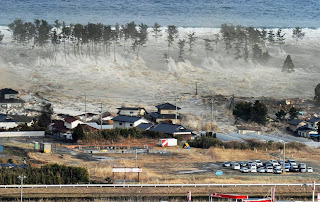What i learned from the Northridge Earthquake is that it ruuined most of the city and it killed many people and they still didnt know where most of the people were. They were still looking for the bodies and many families were crying and giving up because they knew they weren't going to be found.
water cycle
Tuesday, March 29, 2011
Northridge Earthquake
What i learned from the Northridge Earthquake is that it ruuined most of the city and it killed many people and they still didnt know where most of the people were. They were still looking for the bodies and many families were crying and giving up because they knew they weren't going to be found.
Monday, March 28, 2011
Northridge earthquakes
The Northridge earthquake occurred at 4:30 a.m. local time on January 17, 1994. Northridge is located about 30 km northwest of Los Angeles. This earthquake had a 6.9 moment magnitude. The hypocentral depth was 19 km. The duration was about 10 seconds to 20 seconds. The earthquake occurred along a "blind" thrust fault, close to the San Andreas fault. Note that a blind fault is a fault which does not extend to the surface. In other words, it is buried.
Wednesday, March 23, 2011
Japan's Earthquake Tsunami

Japan's earthquake made a big disaster to their country and especially by all the people that just got lost or died in the earthquake. I hope everything is better and it gets better for all the people that lost relatives.
Tuesday, March 1, 2011
Seismic Waves
Seismic waves are the waves of energy caused by the sudden breaking of rock within the earth or an explosion. They are the energy that travels through the earth and is recorded on seismographs.
Friday, February 25, 2011
Batholith
Batholith is a large body of igneous rock formed beneath the Earth’s surface by the intrusion and solidification of magma.
Thursday, February 17, 2011
Strata vs. Shield Volcanoes
There are several ways in which a volcano can form, just as there are several different kinds of volcanoes. Volcanism is part of the process by which a planet cools off.
Hot magma, rising from lower reaches of the Earth, eventually, but not always, erupts onto the surface in the form of lava. During the eruption of a volcano, flowing lava and ash, forming a large cone. This cone is what we know as a volcano.
http://www.windows2universe.org/earth/interior/volcanos_general.html
Tuesday, February 8, 2011
Gulf Currents
Other experts say that the oil is already there—satellite images show oil caught up in one of the eddies, or powerful whorls, attached to the Loop Current, a high-speed stream that pulses north into the Gulf of Mexico and travels in a clockwise pattern toward Florida.
http://news.nationalgeographic.com/news/2010/05/100518-gulf-mexico-oil-spill-loop-current-science-environment/
Subscribe to:
Posts (Atom)